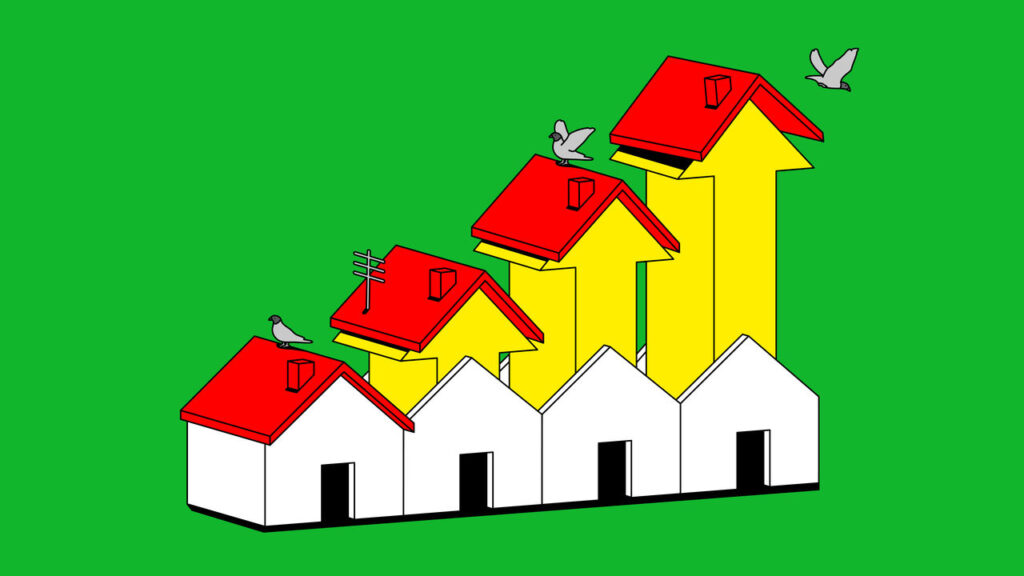Across advanced economies, the rental market is currently experiencing a significant transformation. Prior to the onset of the Covid-19 pandemic, rental prices were elevated but did not exhibit rapid growth, with the cost of renting a home increasing by approximately 2% annually, as indicated by official statistics. However, the landscape shifted dramatically during the pandemic. With numerous lockdowns imposed and economic uncertainties prevailing, rental inflation started to decelerate. In various urban centers, including major cities like San Francisco, New York, and London, rents even decreased, as landlords were compelled to offer lower prices in an effort to attract desperate tenants looking for affordable housing amidst a fluctuating job market.
This downturn in rental prices was not merely a temporary anomaly; it revealed deeper cracks within the housing market that were exacerbated by the pandemic’s economic fallout. As remote work became more prevalent, many individuals opted to vacate bustling urban areas in favor of suburban or rural homes, seeking more space and affordability. This migration led to a decrease in demand for rentals in urban centers, which were once considered prime real estate destinations. Consequently, landlords were left with vacant properties that they needed to fill, often resulting in lower rents and incentivized offers to attract prospective tenants.
As vaccination rates increased and restrictions began to lift, the rental market entered a new phase of recovery. In numerous cities, there was a noticeable resurgence in demand as professionals returned to work and students resumed in-person classes. Amidst this revival, the rental market began to exhibit signs of inflation once again, albeit at a pace that is far from the pre-pandemic norms. Reports from various city housing authorities indicated that rental prices had begun rising, with some areas experiencing steep increases as competition for limited available properties intensified.
Nevertheless, despite this rebound, the current landscape of the rental market is characterized by distinct differences compared to the pre-pandemic era. Many tenants are now more cautious and are prioritizing flexibility over long-term leases, given the unpredictability of economic conditions. This shift has led to an increase in the popularity of short-term rentals and furnished apartments, catering to a growing demographic that values adaptability over commitment.
Moreover, the conversation around housing affordability has gained traction during these transformations. While rents are climbing again in various regions, wage growth and economic stability have not kept pace, prompting an ongoing dialogue about the sustainability of rent increases. Advocacy groups and policymakers are increasingly focusing on strategies to address this imbalance, exploring options such as rent control measures, increased housing supply, and the promotion of affordable housing developments.
Geographically, certain cities are experiencing unique challenges and trends. For instance, cities like Austin, Texas, have seen a surge in demand due to an influx of tech companies and professionals relocating to the area. Conversely, traditional urban metropolises like New York City are grappling with the challenge of adjusting to new realities of remote work and shifting living preferences.
As we progress further into this post-pandemic era, it is clear that the rental market remains in a state of flux. The dual pressures of recovering demand and ongoing affordability challenges will continue to shape the landscape in complex ways. Renters are finding themselves navigating a dynamic environment, where opportunities and obstacles coexist, and landlords must remain adaptive to these changing conditions to ensure profitability while also meeting the needs of their tenants.
In summary, the rental market across advanced economies is witnessing a transformative phase shaped by the lasting impacts of the Covid-19 pandemic. With rental prices fluctuating and tenant preferences evolving, the future of the housing market will likely hinge on the ability of stakeholders—be they renters, landlords, or government officials—to collaborate and innovate in response to these unprecedented challenges.



